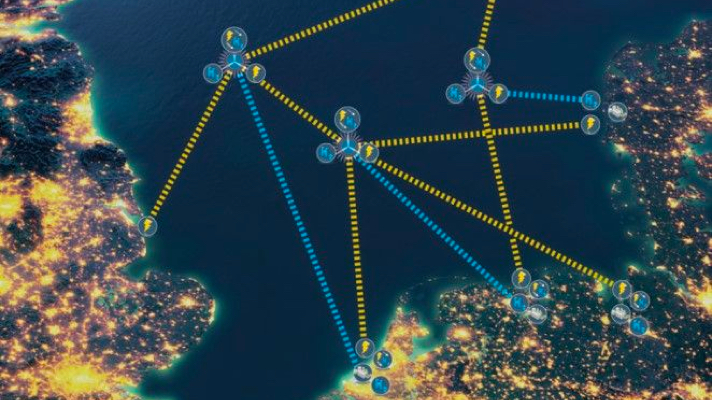According to an international consortium, North Sea wind power hubs are both technically and economically feasible. A first such hub equipped with a power-to-gas solution could be operational in the 2030s.
The consortium, the North Sea Wind Power Hub, concluded this after assessing the feasibility of one or several wind power hubs in the North Sea. To meet the climate goals set by the Paris Agreement, ten to fifteen of these gigawatts hubs should be erected on the North Sea. The hubs will take the form of Hub-and-Spoke projects, combining wind power connection, coupling of energy markets through interconnection and smart integration in the onshore energy grid, including power-to-gas.
The hubs will be installed in far-offshore wind regions and will act as central platforms for supporting the infrastructure required to transport the energy. They will, for example, convert electricity into gas (including and in particular green hydrogen) instead of using the offshore converter platforms commonly used at the moment.
Acceleration of the Essence
Yet, succes of these hubs will require significant changes in national practices, approaches, planning and policies to allow for integrated infrastructure projects for such a modular hub concept to become part of the long term energy transition. In addition, the large scale roll-out rate of offshore wind is crucial to meet “Paris targets”, but acceleration is of the essence.
North Sea Wind Power Hub Consortium
The North Sea Wind Power Hub consortium consists of TenneT, Energinet, Gasunie and Port of Rotterdam. It is evaluating and developing technical concepts and solutions for supplying the large capacities required to generate energy from renewable sources while simultaneously realising the same at the lowest possible environmental impact and cost.
Watch a video about the North Sea Wind Power Hub vision below.








